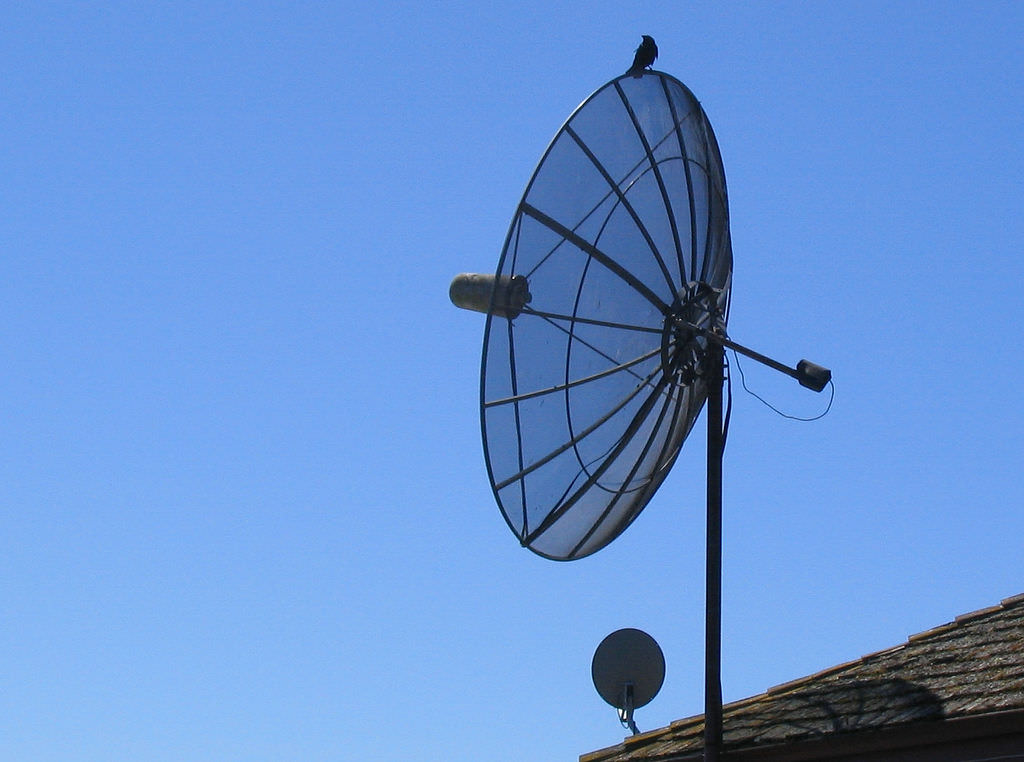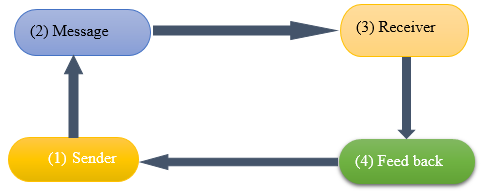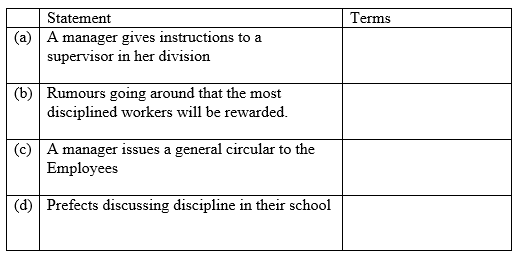LATEST BUSINESS STUDIES NOTES
Highlight four ways through which one can convey verbal communication.(4 mks)
0 Comments
<
>
COMMUNICATION TOPIC OBJECTIVES.By the end of the topic, the learner should be able to:
SUB-TOPIC GUIDELINES
Meaning of communication
Effective communication is vital/important for business in that it serves the following purposes. Importance of communication (purposes)
Communication processCommunication is a process that involves interchange of information and ideas between two or more people. Communication therefore is a circular process i.e. communication may lead to some reaction which in turn may generate further communications or feedback. This flow can be illustrated as below;
Lines of communicationCommunication can be classified according to either the levels of the communicating parties or according to the nature of the message.
A. According to levels This can either be:
Vertical communicationThis is where messages are passed between a senior and her/his juniors in the same organizations
Vertical communication can be divided into two parts:-
Downward communicationThis is a communication process which starts from the top manager to her/his juniors. This can be informed of:
Upward communicationThis is a communication process that starts from the juniors to the seniors and maybe in the form of:
Horizontal communication (lateral communication)This is communication between people of the same level (rank) in the same organization e.g. departmental heads in an organization may communicate to achieve the following:
Diagonal communicationThis is communication between people of different levels in different departments or different organizations e.g. an accounts clerk may communicate with a sales manager of the same organization or of different organizations. Diagonal communication enhances team work.
b) According to nature of message This can either be;
Formal communicationThis is the passing of messages or information using the approved and recognized way in an organization such as official meetings, memos and letters. This means that messages are passed to the right people following the right channels and in the right form.
Formal communication is also known as official communication as it is the passing of information meant for office purposes. Formal systems of communication are consciously and deliberately established. Informal communicationThis is communication without following either the right channels or in the right form i.e. takes place when information is passed unofficially. It is usually used when passing information between friends and relatives hence it lacks the formality.
Informal communication may also take the form of gossips and rumor-mongering. Informal communication usually supplements formal communication as is based on social relations within the organization. Note: Both formal and informal communication is necessary for effective communication in an organization. Essentials of Effective communicationFor communication to be effective it must be originated produced transmitted received understood and acted upon. The following are the main essentials to effective communications.
Forms and Means of CommunicationForms; these are channels or ways of passing on messages. The four main forms are;
Oral communicationThis is where information is conveyed by talking (word of mouth)
It is also known as verbal communication Means of communicationi) Face-to-face conversation
This involves two or more people talking to each other. The parties are usually near each other as much as possible to ensure effective communication. It is suitable where subject matter of discussion require convincing persuasion and immediate feed-back. It may be used during meetings, interviews, seminars, private discussions, classrooms e.t.c It is the most common means of oral communication Advantages of face-to-face communication
Disadvantages of face-to-face communication
ii) Telephone
This form of communication is commonly used in offices and homes. It is useful in sending messages quickly over short and long distances. It is however not suitable for sending;
Installation is done on application by the subscriber (applicant).He/she pays the installation fee in addition; the subscriber is sent a monthly bill with the charges for all the calls made during the month. The charges for calls depend on the time spent time of the day of the week and distance of the recipient from the caller e.g. it is cheaper to call at night than during the day. It is also cheap to make calls during public holidays and weekends than on weekdays. There are also mobile phones which have no physical line connection to exchange and may be fixed to a vehicle or carried in pockets. In Kenya these services are provided by safaricom, Airtel, orange and Yu mobile communications. Advantages of Telephones
Disadvantages of Telephone
Reasons why mobile phones have become popular
iii) Radio calls
This involves transmitting information by use of radio waves i.e. without connecting wires between the sender and the receiver The device used is called a radio telephone. It is commonly used in remote areas where normal telephone services are lacking or where telephone services are available but cannot be conveniently used e.g. policemen on patrol in different parts of a town Radio transmission is a one way communication system i.e. only one person can speak at a time. It is therefore necessary for the speaker to say ‘over’ to signal the recipient that the communication is through so that the recipient can start talking. To end the conversation, the speaker says ‘over and out’ The radio calls are commonly used by the police, game rangers, researchers, foresters, ship owners and hotels situated in remote areas. They are also used for sending urgent messages such as calling for an ambulance and fire brigade Note; Radio calls are not confidential since they use sound frequencies that can be tapped by any radio equipment that is tuned to that frequency Advantages of Radio calls
Disadvantages of Radio calls
iv) Paging
This is a means of communication used to locate staff or employers who are scattered in an organization or who are outside and need to be located urgently When within the organization portable receivers, lighted signals, bells, loudspeakers etc. are used When outside the organization employees are contacted using portable receivers (pocket-size) used to send messages through sms (short message services) The paying system can only be used within a certain radius. When using a portable receiver, the caller will contact the subscriber by calling the post office which will then activate the pager. The subscriber is then informed to contact the originator of the message. Paging is mostly used in emerging cases v) Radio
Usually messages intended for a wide audience can be transmitted through a radio more quickly and economically than by using other forms of communication. Radio is used for different reasons apart from advertising e.g. for formal notices, and venue for activities Advantages of oral/verbal communication
Disadvantages of oral/verbal communication
vi) Written Communication
This involves transmission of messages through writing. It is the most formal way of communication because the information is in recorded form and can be used for reference Means of written communication (i)Letters
Letters are the most commonly used means of communication. There are two categories of letters;
Business letters are written to pass messages and information from businessmen to customers and vice versa e.g. letters of inquiry and acknowledgement notes. It can also be used between employees and employers in an organization e.g. a complimentary note. Official letters are letters between people in authority and others that touch on the activities of the organization e.g. an application letter for an advertised vacancy in an organization. Formal letters have a salutation clause which usually starts with “Dear Madam “or “Dear Sir”. It also bears the addresses of both the sender and the recipient, a subject heading and a complimentary clause ending with “Yours faithfully”. b) Informal Letters; these are letters between friends and relatives They are also known as Personal letters ii) Telegrams
This is a means of communication provided by the post office. The sender obtains the telegram form from the post office and fills the message on it in capital letters and hand it over to the post office employees at the counter. Alternatively the sender may use a telephone to read the message to the post office. The post office then transmits the message to the recipient post office. The charges of a telegram are based on the number of words used, the more the words used the higher the charges. However there is a standing charge. Telegrams are used for sending urgent messages. Note; Due to changing technology telegrams have lost popularity. Short messages can now be sent by cell phones (mobile phones) using the short messages services (sms) iii) Telex
This is a means of communication used to send short or detailed messages quickly by use of a teleprinter. The service is provided by the post office on application. A message is sent by use of two teleprinters one on the senders end and another on the recipients end. When sending information through a teleprinter which is a form of electric typewriter producing different electric signals, its keys are pressed and automatically the message is printed at the recipient’s machine. Telex saves time for both the sender and recipient as the messages are brief precise and received immediately. However it’s an expensive means of communication iv) Facsimile (Fax)
This involves transmission of information through a fax machine. Both the sender and the receiver must have a fax machine. These machines are connected using telephone lines Fax is used to transmit printed messages such as letters, maps, diagrams and photographs. To send the information, one dials a fax number of the required destination and then the document is fed into the sender’s machine. The receiving machine reproduces the document immediately. It is used for long distance photocopying service. v) Memorandum (Memo) This is printed information for internal messages within an organisation. It is normally used to pass information between departments or offices in an organization. Memoranda have no salutation or complimentary clause. They are suitable for informing the officers within an organization of matters related to the firm. A memo is pinned on the notice board of an organization if it is meant for everybody otherwise passed to the relevant staff. vi) Notice This is a written communication used to inform a group or the public about past current or future events. It is usually brief and to the point. It can be placed on walls, in public places, on trees, in newspapers or on notice boards. viii) Reports
These are statements/within records of findings recommendations and conclusion of an investigation/research. A report is usually sent to someone who has asked for it for a specific purpose. viii) Circulars These are many copies of a single letter addressed to very many people when the message intended for each is the same. ix) Agenda This is an outline of the items to be discussed in a meeting. It is usually contained in a notice to a meeting sent in advance to all the participants of the meeting. The notice of the meeting contains;
These are records of the proceedings of a meeting. Keeping minutes of certain meetings is a legal requirements e.g. companies Keeping minutes for other meetings are for management purposes to ensure that decisions made at the meetings are implemented Advantages of written communication
Disadvantages of written communication
3) Visual Communication
This is the process of passing information by use of diagrams, drawings pictures, signs, and gestures etc. a)Photographs A photograph is an image (visual representation of an object as it appeared at the time when the photograph was taken Photographs are self-explanatory and may not be accompanied by any narration or explanation. The recipient is able to get the message at a glance. b) Signs Refer to marks, symbols, drawings or gestures whose purpose is to inform the public about such things as directions, distances, dangers and ideas. Examples; road signs, traffic lights and danger signs on electricity poles This means of communication can only be effective if the meaning of the sign used is understood. Graphs; these are used to show and illustrate statistical information Charts; these are diagrams which show or illustrate the flow of an idea e.g. an organization chart illustrates the whole organization structure indicating the chain of command Advantages of visual communication
Disadvantages of visual communication
4) Audio-Visual communication
This is a form of communication in which messages are sent through sounds and signs. This form of communication ensures that the receiver gets the message instantly. It is suitable where both the sender and the receiver know the meaning of specific sounds and signs. Means of Audio-visual communication
Advantages of Audio-visual communication
Disadvantages of Audio-visual communication
5) Audio Communication
This is when the message is transmitted through sounds. Examples include
Advantages of Audio communication
Disadvantages of Audio communication
communication questions and answers1. 1996 P1
Outline four reasons why a business person may prefer written communication to verbal communication. (5 marks) 2. 1997 P1 State five services offered by the post office. (5 marks) 3. 1998 P1 State four advantages of verbal communication. (4 marks) 4. 1999 P1 Highlight four advantages of using telex as a means of communication. (4 marks) 5. 1999 P2 Discuss the factors that a firm may consider in choosing a method of communication within the firm 6. 2000 P1 State four features of effective communication. (4 marks) 7. 2001 P1 State four reasons why the post office is still popular as a means of sending letters. (4 marks) 8. 2001 P2 State reasons for use of letters in business communication. 9. 2002 P1 Give four reasons why a person would send a message by mail rather than by telephone. (4 marks) 10. 2003 P1 Highlight four factors that may limit the use of telephone as a means of communication in Kenya. (4 marks) 11. 2004 P1 State four problems that may interfere with the effectiveness of face to face communication. (4 marks) 12. 2006 Q15 P1 Give four reasons why one would prefer a letter to a telephone to send a message. (4 marks) 13. 2007 Q2 P1 The following terms relate to communication: vertical, horizontal, formal and informal. Write the appropriate term of communication associated with each of the following statements. 14. 2007 Q1b P2
b) Explain four advantages of transaction business through e-commerce. (8 marks) 15. 2008 Q5 P1 Outline four benefits that may accrue to a business person who uses e-mail to communicate. (4 marks) 16. 2009 Q12 P1 Outline four circumstances under which face to face communication may be ineffective. 17. 2012 Q5 P1 Outline one circumstance under which each of the following telecommunication services may be used:
(b) Explain five elements of effective communication. (10 marks) |
Business Studies Notes Form 1 - 4
Categories
All
Archives
April 2024
AuthorAtika School Team |
||||||
We Would Love to Have You Visit Soon! |
Hours24 HR Service
|
Telephone0728 450425
|
|
8-4-4 materialsLevels
Subjects
|
cbc materialsE.C.D.E
Lower Primary
Upper Primary
Lower Secondary
Upper Secondary
|
teacher support
Other Blogs
|





 RSS Feed
RSS Feed